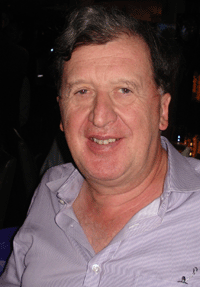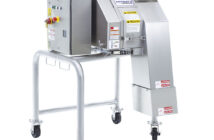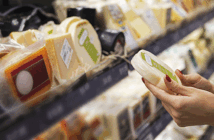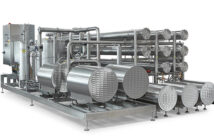Clean water supply and global warming are major issues for food and beverage companies who are under increasing pressure to minimise physical and environmental footprints.
Global Water Engineering used advanced anaerobic technology at a multinational confectionery plant in Bangkok to exceed the requirements of one of the toughest municipal regulatory regimes in Asia.
The confectionery company upgraded its wastewater and renewable energy plant in line with Bangkok’s Action Plan on Global Warming Mitigation 2007-2012, using advanced anaerobic technology which cuts the chemical oxygen demand from discharge water by more than 90 percent (to 1600mg/l).
The same technology has also been employed in Australian food and beverage plants, says Michael Bambridge who heads up CST Wastewater Solutions, Global Water Engineering’s partner for Australia and New Zealand.
“We have employed it with other major organisations, including Golden Circle and SAB Miller’s Bluetongue brewery,” he says.
The new Bangkok process water treatment plant – occupying only 50-60sqm – integrates seamlessly into the plant’s existing facility. It has lifted output standards beyond specifications while producing 1800 cubic metres of biogas per day at nominal load.
“The client has said the installation is fantastic. It is exceeding the 90 percent chemical oxygen demand removal in service and frequently achieving 95 percent,” says GWE chief executive Jean Pierre Ombregt.
The plant delivers biogas at 70 percent methane content to power boilers and heat processes that in other plants might consume expensive and polluting bunker oil.
And the wastewater plant also consumes less energy than before to operate.
“Previously, the plant engineers said they had two big aerators going all the time. Now they find they don’t need them, even though they are expanding production. The water is very clean and there is no smell,” said Mr Ombregt.
The Bangkok wastewater treatment plant consists of pre-treatment, anaerobic stages and the previously existing aerobic stage.
The pretreatment stage includes a pre-existing equalisation basic and degasifying basic. Prior to entering the anaerobic reactor (UASB) the PH is adjusted by addition of NaOH inline, followed by an inline mixer.
“The confectionery plant installation shows how it is possible to attain top environmental standards of wastewater cleanliness while generating green power on compact sites. A high efficiency anaerobic/aerobic system that is properly designed from the outset occupies less space than the system it replaces or upgrades,” says Mr Ombregt.
“Green power from biogas is big news for industry these days, but GWE has successfully built and commissioned more than 75 biogas utilisation systems for clients worldwide over the past 15 years,” says Mr Ombregt.
“We have completed installations globally that combine specialised know-how in generating biogas with our extensive range of anaerobic reactors, and in supply and installation of biogas re-use and handling systems for fossil fuel replacement or power generation.”
The Bangkok confectionery plant’s wastewater passes through several pretreatment steps before entering a methane reactor in which the wastewater’s organic content (chemical oxygen demand) is digested by bacteria in a closed reactor, degrading the compounds and converting them into valuable biogas and cleaned effluent.
Biogas from the process is collected and reused as renewable energy to power the plant’s boiler drying equipment – and in many other instances to generate electricity through on-site generators. Surplus power is sold back into the grid.
More information: Michael Bambridge
Tel: +61 2 9417 3611
Email: [email protected]
Visit: www.cstwastewater.com






























































































